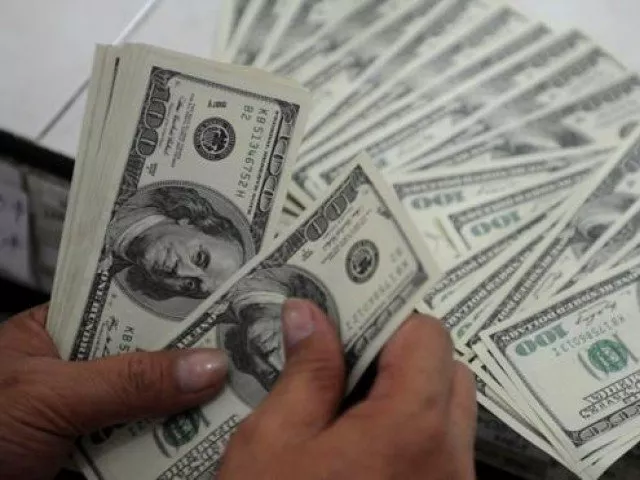Rupee slumps to all-time low of 166 against dollar
Slide attributed to panic accumulation of greenback in the wake of virus hitting global economies
KARACHI: The Pakistani currency depreciated by Rs4.53, or 2.80%, to an all-time low of Rs166.13 against the US dollar in the inter-bank market on Thursday.The steep fall was attributed to panic accumulation of dollars over fears that the supply of the greenback might reduce in the country due to lockdowns across the world, including in Pakistan, to curb the spread the coronavirus pandemic.
The acceleration in foreign investors’ exit from domestic debt and stock markets is likely to keep mounting pressure on the rupee in the coming days. Their exit remains the single largest reason for return of volatility in the rupee in the past three weeks.
"It could settle near the level of Rs175," Taurus Securities Head of Research Mustafa Mustansir told The Express Tribune.
"We are seeing the outflow of hot money (flow of funds from one country to another to earn a short-term profit on the interest rate) every day and the State Bank doesn't seem to be intervening right now," he added.
Many other experts avoided anticipating how much ground the rupee might lose against the greenback under the current cycle.
They said it all depended on the intensity of the global health crisis. The pandemic has continued to take its toll on economies around the world.
Several of them, however, strongly believe that the rupee would recover in the times to come considering the additional inflow of around $3.7 billion in the country from bilateral and multilateral lender and donor agencies to combat against the pandemic. Besides, the import prices of international petroleum oil and other global commodities have also fallen sharply.
The rupee has fallen past its previous record low of Rs164.05 against the dollar on June 27 last year.
It depreciated by Rs7.46, or 4.70%, during the current week and Rs11.46, or 7.43%, in the ongoing month of March, according to the State Bank.
The head of treasury at a top bank told The Express Tribune that the gap between the significantly high imports and sluggish exports had apparently made the rupee-dollar exchange rate volatile.
Even though the pandemic has temporarily reduced imports and exports activities, the prevailing notable trade deficit -- the gap between higher imports and lower exports -- may keep the demand for dollars on the higher side.
Foreign investors have sold rupee-based T-bills and Pakistan Investment Bonds (PIBs) worth $1.5 billion in the past three weeks. They have withdrawn over half of their investment of $3.49 billion in debt securities over the past nine months.
Topline Securities Director Research Syed Atif Zafar said the rupee would remain under pressure as there was a shortage of dollars because of the suspension of flights. “Exchange companies cannot bring in the currencies," he added.
Besides, he said, the 225 basis points cut in the benchmark interest rate by the State Bank to 11% in the last one week and the appreciation of the US dollar internationally would keep the rupee under pressure going forward.
Next Capital Managing Director Muzammil Aslam said the payment mismatch (gap between inflow and outflow) had caused the currency depreciation.
"It should recover once the global storm of COVID-19 settles down. The State Bank has maintained its policy of a flexible exchange rate to protect competitiveness and foreign exchange reserves," he observed.
BMA Capital Executive Director Saad Hashmi said the rupee depreciation was driven by the ongoing coronavirus outbreak uncertainties.
Prior to the rupee movement, international currency market were also volatile given the sudden onset of the pandemic and subsequent measures by global central banks. "The visibility on the pandemic is getting better by the day and I expect the rupee volatility to subside accordingly,” he added.
Arif Habib Limited Head of Research Samiullah Tariq said that the pressure on the rupee mounted because of the spike in the outflow of dollars on account of foreigners' exit and the drop in supply of the foreign currency in the system since money changers and exchange companies were also presently closed.
"However, the current account balance is expected to swing into surplus and hopefully the currency parity will improve,” he predicted.

COMMENTS
Comments are moderated and generally will be posted if they are on-topic and not abusive.
For more information, please see our Comments FAQ